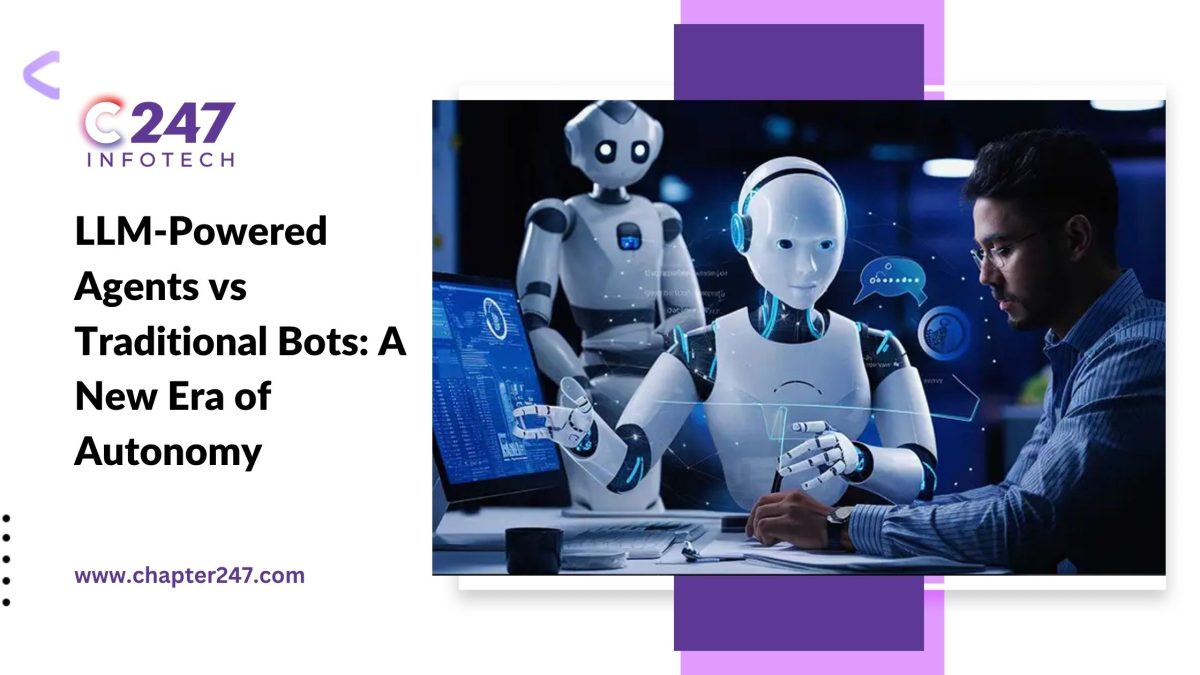Advancement in chatbot technology has made a drastic change in the relation between machines and human beings. Gone are the days of strict command-focused bots and the industry has experienced a new height of independence and intelligence with the introduction of the current conversation agents that are run on large language models (LLMs). The question that businesses encounter at the time is whether to take an organized methodology associated with traditional bots or take the versatility and educative advantage of the agent-from-LLM method.
The Emergence of LLMs with Chatbots
The idea behind kinds of AI like OpenAI GPT and Google gemini is that they are Large Language models (LLMs) This means that the AI model is trained on huge amounts of data consisting of things like books, websites, and articles, among others.
It is through this training that they develop an amazing repertoire in the language of man such that they are able to process, create and react to text in a naturally contextual way. LLMs are able to learn in real-time, make them capable of giving relevant responses, and facilitate an elaborate discussion without the need to program them to deal with all situations.
Organized and Yet Constrained
Most chatbots prior to the appearance of LLMs were of the rule-based or traditional AI approach. These systems operate on predetermined flows, keywords, and conditional statements or so-called if-then statements.
They can be trusted where they are concerned but they mostly break down when a user enters unanticipated inputs. Although they excel in an environment where everything is highly controlled, they lack the capability to deal with unpredictable queries and thus their application in the current dynamic business environment is limited.
Performance and experience
Agents powered by LLM are more human. They are able to respond to subtle queries and recall sections of a discussion, and to use a different tone or strategy based on circumstances. This creates more fluent and user-satisfying interactions. By contrast, the traditional bots are unsophisticated, mechanical, and cannot step out of the pre-formed design without human handoff, when the situation becomes complex.
Choosing by Industry: Where Each Shines
Selection of LLM or traditional bots is usually dependent on the type of business. There are areas and industries that must be very strict and data secure and there are those where customers are to be engaged and a good conversation is of importance.
| Sector | Preferred Model | Reason |
| Healthcare, Finance | Traditional AI | Predictability, compliance, and control |
| E-commerce | LLMs | Personalized user experiences |
| Customer Service | LLMs | Flexible, human-like conversations |
| SMEs | Traditional AI (initially) | Cost-sensitive but evolving toward LLMs |
Applications of LLMs in the highly delicate industry of healthcare and financial management may be met by criticism regarding data management and inconsistency. In this case, the classic models are more popular since they have rigid guidelines and regulated output. On the other hand, such places as retail, travel, and customer support are secured with context fluidity of LLM, where there is a great role of understanding intent and emotion involved.
Cost and Scalability
Cost has become one of the biggest obstacles to the adoption of LLM. To train large models, powerful hardware or cloud system will be needed. This might be a remote possibility to small and medium sized enterprises (SMEs). Through fast-growing AI technology, however, LLMs are getting more efficient and cheaper. Today numerous corporations can provide lightweight LLM engines that introduce potent conversational AI to a wider audience. The short term investment might be fully paid in long-term benefits to the customer satisfaction and the minimisation of the supporting load.
A Transition to Autonomy
LLMs are not simply an improvement on chatbot technology, though, but a change towards autonomous digital agents. Such systems are not good instruction followers, but they interpret, decide, and act depending on the context. This introduces additional possibilities of use including highly intelligent virtual assistants, end-to-end automation of the customer onboarding process. With the progression of maturity of LLMs, the sphere of its applications is going to be extended far beyond the field of chatbots, affecting automation and digital transformation in the enterprise in both industries.
Conclusion
Overall, LLM-based agents are changing the very definition of human-AI interaction, even though the traditional bots have not yet ceased to exist. The bottom line is that in a lot of businesses, the future is where smart and autonomous systems will be embraced. Partner with Chapter247 and build intelligent, scalable, and future-ready digital solutions. Whether you’re a startup or an enterprise, our expert team is here to accelerate your growth.




